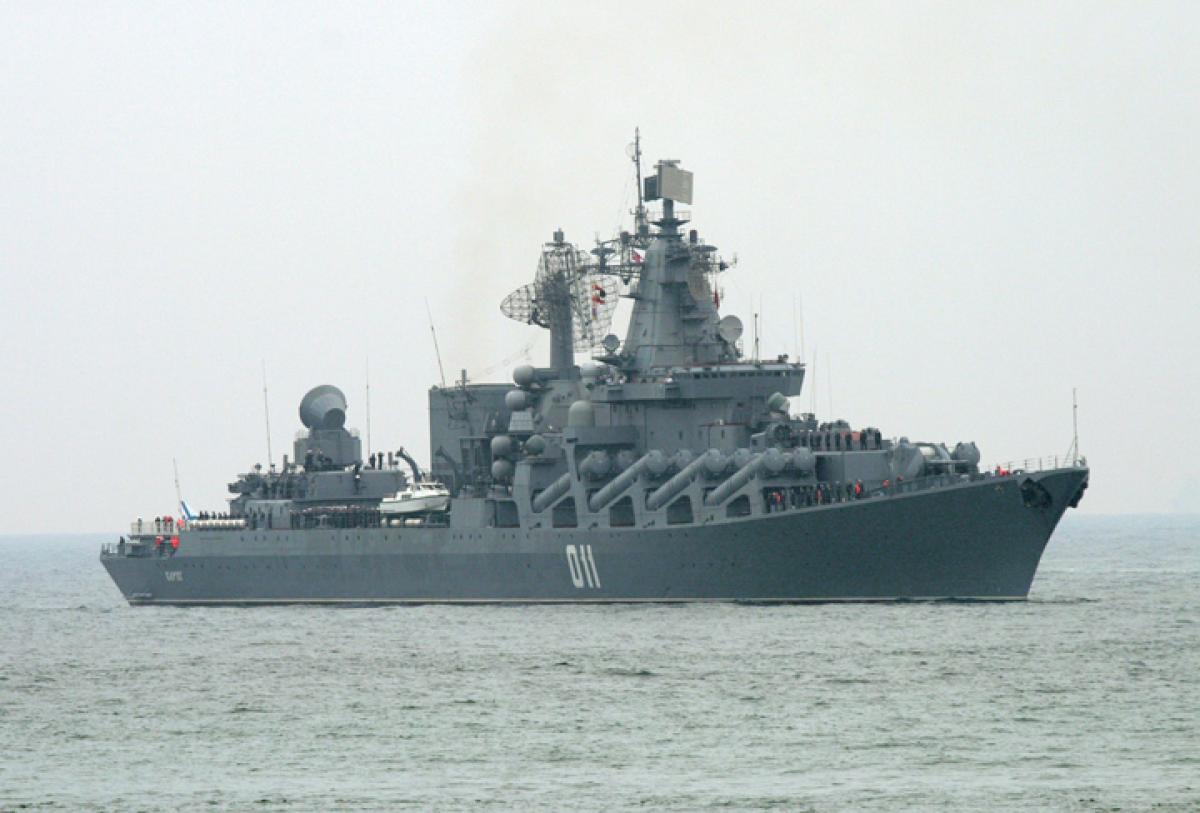Russia and China have been increasing their military cooperation throughout 2013, and in early July this growing partnership included extensive training off the coast of Vladivostok and in the Sea of Japan. Dubbed “Joint-Sea 2013,” the Sino-Russian event was China’s largest-ever foreign naval exercise and reportedly included the flagship of the Russian Pacific Fleet, the Slava-class guided-missile cruiser Varyag (pictured here), at least one Russian submarine, and ten additional Russian naval ships. Land-based Su-24 strike fighters were also said to have taken part in the exercise. Participating Chinese naval assets included at least four guided-missile destroyers, two frigates, a support ship, and several aircraft. Once Chinese forces left the region, Russia’s armed forces kicked off an even larger series of military maneuvers involving more than 150,000 personnel, 70 ships, 1,000 armored vehicles, and 100 military aircraft including strategic bombers.
In the face of massive budget cuts and funding shortages, the U.S. Navy has reversed its decision to repair the stricken nuclear-powered attack submarine USS Miami (SSN-755) and instead will retire the submarine, which had been gutted by arson in May 2012. Though considered “fully repairable from a technical perspective,” fixing the submarine was initially expected to cost around $450 million and take three years to complete. More recent estimates, however, have proven even higher, with cost assessments rising dramatically to $700 million. Concluding that the money would be better spent elsewhere, the Fleet must now make do with one less submarine. The Miami was built by Electric Boat in Connecticut, entered service in 1990, and had been in dry dock for overhaul at the Portsmouth Naval Shipyard in Kittery, Maine, when the fire occurred. Twenty-four-year-old Casey James Fury, a civilian worker at the shipyard, pled guilty to setting the fire and was sentenced to more than 17 years in federal prison earlier this year.
In a deal that could be worth $1.2 billion, Saudi Arabia has requested the purchase of 30 Mk-V patrol boats from the United States along with associated equipment, training, and logistics support. The proposed purchase would also include acquisition of 32 27-mm guns to arm the Saudi boats. These vessels are based on the 82-foot, 68-ton (full load) Mk-V special-operations craft that were built for the U.S. Navy in the late 1990s. If constructed, the new vessels will probably be very similar to the slightly larger 89-foot variants that were built several years ago by U.S. Marine shipyard of New Orleans, Louisiana, for the Royal Omani Police Force; these feature a fiberglass hull and a high top speed in excess of 45 knots. If the deal is completed, the new Mk-Vs will likely replace a number of aging patrol boats that entered Saudi naval service during the 1970s, ’80s, and ’90s.




